- Home
- William Gibson
Thirteen Views Of A Cardboard City
Thirteen Views Of A Cardboard City Read online
Thirteen Views Of A Cardboard City
William Gibson
William Gibson
Thirteen Views Of A Cardboard City
ONE. DEN-EN
Low angle, deep perspective, establishing Tokyo subway station interior.
Shot with available light, long exposure; a spectral pedestrian moves away from us, into background. Two others visible as blurs of motion.
Overhead fluorescents behind narrow rectangular fixtures. Ceiling tiled with meter-square segments (acoustic baffles?). Round fixtures are ventilators, smoke-detectors, speakers? Massive square columns recede. Side of a stairwell or escalator. Mosaic tile floor in simple large-scale pattern: circular white areas in square tiles, black infill of round tiles. The floor is spotless: no litter at all. Not a cigarette butt, not a gum-wrapper.
A long train of cardboard cartons, sides painted with murals, recedes into the perspective of columns and scrubbed tile: first impression is of a children's art project, something choreographed by an aggressively creative preschool teacher. But not all of the corrugated cartons have been painted; many, particularly those farthest away, are bare brown paper. The one nearest the camera, unaltered, bright yellow, bears the Microsoft logo.
The murals appear to have been executed in poster paints, and are difficult to interpret here.
There are two crisp-looking paper shopping-bags on the tile floor: one near the murals, the other almost in the path of the ghost pedestrian. These strike a note of anomaly, of possible threat: London Transport warnings, Sarin cultists... Why are they there? What do they contain?
The one nearest the murals bears the logo "DEN-EN." Deeper in the image are other cartons. Relative scale makes it easier to see that these are composites, stitched together from smaller boxes. Closer study makes the method of fastening clear: two sheets are punctured twice with narrow horizontal slits, flat poly-twine analog (white or pink) is threaded through both sheets, a knot is tied, the ends trimmed neatly. In fact, all of the structures appear to have been assembled this way.
Deepest of all, stairs. Passengers descending.
TWO. BLUE OCTOPUS
Shallow perspective, eye-level, as though we were meant to view an anamorphic painting.
This structure appears to have been braced with a pale blue, enameled, possibly spring-loaded tube with a white, non-slip plastic foot. It might be the rod for a shower-curtain, but here it is employed vertically. Flattened cartons are neatly lashed to this with poly-tie.
The murals. Very faintly, on the end of the structure, nearest the camera, against a black background, the head of the Buddha floats above something amorphous and unreadable. Above the Buddha are fastened what appear to be two packaging-units for Pooh Bear dolls. These may serve a storage function. The mural on the face of the structure is dark, intricate, and executed (acrylic paints?) with considerable technique. Body parts, a sense of claustrophobic, potentially erotic proximity. A female nude, head lost where the cardboard ends, clutches a blue octopus whose tentacles drape across the forehead of a male who seems to squat doglike at her feet. Another nude lies on her back, knees upraised, her sex shadowed in perspective. The head of a man with staring eyes and pinprick pupils hovers above her ankles; he appears to be smoking but has no cigarette.
A third nude emerges, closest to the camera: a woman whose features suggest either China or the Mexico of Diego Rivera.
A section of the station's floor, the round black tiles, is partially covered with a scrap of grayish-blue synthetic pile carpeting.
Pinned eyes.
THREE. FRONTIER INTERNATIONAL
Shot straight back into what may be a wide alcove. Regular curves of pale square tiles.
Four structures visible.
The largest, very precisely constructed, very hard-edged, is decorated with an eerie pointillist profile against a solid black background: it seems to be a very old man, his chin, lip-less mouth and drooping nose outlined in blood red. In front of this is positioned a black hard-sided overnighter suitcase.
Abutting this structure stands another, smaller, very gaily painted: against a red background with a cheerful yellow bird and yellow concentric circles, a sort of Cubist ET winks out at the camera. The head of a large nail or pin, rendered in a far more sophisticated style, penetrates the thing's forehead above the open eye.
A life-sized human hand, entirely out of scale with the huge head, is reaching for the eye.
Nearby sits an even smaller structure, this one decorated with abstract squares of color recalling Klee or Mondrian. Beside it is an orange plastic crate of the kind used to transport sake bottles. An upright beer can. A pair of plastic sandals, tidily arranged.
Another, bigger structure behind this one. Something painted large-scale in beige and blue (sky?) but this is obscured by the Mondrian. A working door, hinged with poly-tie, remains unpainted: the carton employed for the door is printed with the words "FRONTIER INTERNATIONAL."
Individual styles of workmanship start to become apparent.
Deeper in the image, beyond what appears to be a stack of neatly-folded blankets, is located the blue enamel upright, braced against the ceiling tile. Another like it, to its right, supports a paper kite with the printed face of a samurai.
FOUR. AFTER PICASSO
Shallow perspective of what appears to be a single, very narrow shelter approximately nine meters in length. Suggests the literally marginal nature of these constructions: someone has appropriated less than a meter at the side of a corridor, and built along it, tunneling like a cardboard seaworm.
The murals lend the look of a children's cardboard theater.
Punch in the underground.
Like so many of the anonymous paintings to be found in thrift shops everywhere, these murals are somehow vaguely after Picasso. Echo of Guernica in these tormented animal forms. Human features rendered flounder-style: more Oxfam Cubism.
Square black cushion with black tassels at its corners, top an uncharacteristically peaked section of cardboard roof. Elegant.
The wall behind the shelter is a partition of transparent lucite, suggesting the possibility of a bizarre ant-farm existence.
FIVE. YELLOW SPERM
We are in an impossibly narrow "alley" between shelters, perhaps a communal storage area. Cardboard shelving, folded blankets.
A primitive portrait of a black kitten, isolated on a solid green ground, recalls the hypnotic stare of figures in New England folk art.
Also visible: the white plastic cowl of an electric fan, yellow plastic sake crate, pale blue plastic bucket, section of blue plastic duck-board, green plastic dustpan suspended by string, child's pail in dark blue plastic. Styrofoam takeaway containers with blue and scarlet paint suggest more murals in progress.
Most striking here is the wall of a matte-black shelter decorated with a mural of what appear to be large yellow inner-tubes with regularly spaced oval "windows" around their perimeters; through each window is glimpsed a single large yellow sperm arrested in midwriggle against a nebulous black-and-yellow background.
SIX. GOMI GUITAR
Extreme close, perhaps at entrance to a shelter.
An elaborately designed pair of black-and-purple Nike trainers, worn but clean. Behind them a pair of simpler white Reeboks (a woman's?).
A battered acoustic guitar strung with nylon. Beside it, a strange narrow case made of blue denim, trimmed with red imitation leather; possibly a golf bag intended to carry a single club to a driving range?
A self-inking German rubber stamp.
Neatly folded newspaper with Japanese baseball stars.
A battered pump-thermos with floral design.
SEVEN. 108
A space like the upper berths on the Norfolk & Western sleeping cars my mother and I took when I was a child. Form following function.
The structure is wide enough to accommodate a single traditional Japanese pallet. A small black kitten sits at its foot (the subject of the staring portrait?). Startled by the flash, it is tethered with a red leash. A second, larger tabby peers over a shopping bag made of tartan paper. The larger cat is also tethered, with a length of thin white poly rope.
Part of a floral area-rug visible at foot of bed.
This space is deeply traditional, utterly culture-specific.
Brown cardboard walls, cardboard mailing tubes used as structural uprights, the neat poly-tie lashings.
On right wall:
GIC
MODEL NO: VS-30
Q'TY: 1 SET
COLOR: BLACK
C/T NO:108
MADE IN KOREA
At the rear, near what may be assumed to be the head of the bed, are suspended two white-coated metal shelves or racks. These contain extra bedding, a spare cat-leash, a three-pack of some pressurized product (butane for a cooker?), towels.
On the right wall are hung two pieces of soft luggage, one in dark green imitation leather, the other in black leather, and a three-quarter-length black leather car coat.
On the left wall, a white towel, a pair of bluejeans, and two framed pictures (content not visible from this angle).
A section of transparent plastic has been mounted in the ceiling to serve as a skylight.
EIGHT. HAPPY HOUR
Wall with mailing-tube uprights.
A large handbill with Japanese stripper: LIVE NUDE, TOPLESS BOTTOMLESS, HAPPY HOUR. Menu-chart from a hamburger franchise illustrating sixteen choices.
Beneath these, along the wall, are arranged two jars containing white plastic spoons, a tin canister containing chopsticks, eight stacked blue plastic large takeaway cups, fourteen stacked white paper takeway cups (all apparently unused, and inverted to protect against dust), neatly folded towels and bedding, aluminum cookware, a large steel kettle, a pink plastic dishpan, a large wooden chopping-board.
Blanket with floral motif spread as carpet.
NINE. SANDY
A different view of the previous interior, revealing a storage loft very tidily constructed of mailing-tubes and flattened cartons.
The similarities with traditional Japanese post-and-beam construction is even more striking, here. This loft-space is directly above the stacked cookware in the preceding image. Toward its left side is a jumble of objects, some unidentifiable: heavy rope, a child's plaid suitcase, a black plastic bowl, a Softball bat. To the right are arranged a soft, stuffed baby doll, a plush stuffed dog, a teddy bear wearing overalls that say "SANDY," what seems to be a plush stuffed killer whale (shark?) with white felt teeth. The whale or shark still has the manufacturer's cardboard label attached, just as it came from the factory.
In the foreground, on the lower level, is a stack of glossy magazines, a tin box that might once have held candy or some other confection, and an open case that probably once contained a pair of sunglasses.
TEN. BOY'S BAR KYOKA
A very simple shot, camera directed toward floor, documenting another food-preparation area.
A square section of the round tiles is revealed at the bottom of the photograph. The rest of the floor is covered by layers of newspaper beneath a sheet of brown cardboard. A narrow border of exposed newsprint advertises "Boy's Bar KYOKA."
A blue thermos with a black carrying-strap. A greasy-looking paper cup covered with crumpled aluminum foil. A red soap-dish with a bar of white soap. A cooking-pot with an archaic-looking wooden lid. The pot's handle is wrapped in a white terry face cloth, secured with two rubber bands. Another pot, this one with a device for attaching a missing wooden handle, contains a steel ladle and a wooden spatula. A nested collection of plastic mixing bowls and colanders.
A large jug of bottled water, snow-capped peaks on its blue and white label.
A white plastic cutting-board, discolored with use. A white plastic (paper?) bag with "ASANO" above a cartoon baker proudly displaying some sort of loaf.
ELEVEN . J.O.
The shelters have actually-enclosed a row of pay telephones!
Dial 110 for police.
Dial 119 for fire or ambulance.
Two telephones are visible: they are that singularly bilious shade of green the Japanese reserve for pay phones.
They have slots for phone-cards, small liquid crystal displays, round steel keys. They are mounted on individual stainless-steel writing-ledges, each supported by a stout, mirror-finished steel post. Beneath each ledge is an enclosed shelf or hutch, made of black, perforated steel sheeting. Provided as a resting place for a user's parcels.
The hutches now serve as food-prep storage: four ceramic soup bowls of a common pattern, three more with a rather more intricate glaze, four white plastic bowls and several colored ones. A plastic scrubbing-pad, used.
On the floor below, on newspaper, are an aluminum teapot and what may be a package of instant coffee sachets. Three liter bottles of cooking oils.
On the steel ledge of the left-hand phone is a tin that once contained J.O. Special Blend ready-to-drink coffee.
TWELVE. NIPPON SERIES
An office.
A gap has been left in the corrugated wall, perhaps deliberately, to expose a detailed but highly stylized map of Tokyo set into the station's wall. The wall of this shelter and the wall of the station have become confused. Poly-tie binds the cardboard house directly into the fabric of the station, into the Prefecture itself.
This is quite clearly an office.
On the wall around the official, integral subway map, fastened to granite composite and brown cardboard with bits of masking tape: a postcard with a cartoon of orange-waistcoated figures escorting a child through a pedestrian crossing, a restaurant receipt (?), a newspaper clipping, a small plastic clipboard with what seem to be receipts, possibly from an ATM, a souvenir program from the 1995 Nippon Series (baseball), and two color photos of a black-
and-white cat. In one photo, the cat seems to be here, among the shelters.
Tucked behind a sheet of cardboard are four pens and three pairs of scissors. A small pocket flashlight is suspended by a lanyard of white poly-tie.
To the right, at right angles to the wall above, a cardboard shelf is cantilevered with poly-tie. It supports a box of washing detergent, a book, a dayglo orange Casio G-Shock wristwatch, a white terry face cloth, a red plastic AM/FM cassette-player, and three disposable plastic cigarette-lighters.
Below, propped against the wall, is something that suggests the bottom of an inexpensive electronic typewriter of the sort manufactured by Brother.
A box of Chinese candy, a cat-brush, a flea-collar.
THIRTEEN. TV SOUND
Close-up of the contents of the shelf.
The red stereo AM/FM cassette-player, its chrome antenna extended at an acute angle for better reception. It is TV Sound brand, model LX-43. Its broken handle, mended with black electrical tape, is lashed into the structure with white poly-tie. Beside the three lighters, which are tucked partially beneath the player, in a row, are an unopened moist towelette and a red fine-point felt pen. To the left of the player is a square red plastic alarm clock, the white face cloth, and the Casio G-Shock. The Casio is grimy, one of the only objects in this sequence that actually appears to be dirty. The book, atop the box of laundry detergent, is hardbound, its glossy dustjacket bearing the photograph of a suited and tied Japanese executive. It looks expensive. Inspirational? Autobiographical?
To the right of the LX-43: a rigid cardboard pack of Lucky Strike non-filters and a Pokka coffee tin with the top neatly removed (to serve as an ashtray?).
On the cardboard bulkhead above these things are taped up two sentimental postcards of paintings of kittens playing. "Cat collection" in a cursive font.
Below these are glued (not taped) three black-and-
white photographs.
#1: A balding figure in jeans and a short-sleeved T-shirt squats before an earlier, unpainted version of this structure.
One of the cartons seems to be screened with the word "PLAST—". He is eating noodles from a pot, using chopsticks.
#2: The "alley" between the shelters. The balding man looks up at the camera. Somehow he doesn't look Japanese at all. He sits cross-legged among half-a-dozen others. They look Japanese. All are engrossed in something, perhaps the creation of murals.
#3: He squats before his shelter, wearing molded plastic sandals. His hands grip his knees. Now he looks entirely Japanese, his face a formal mask of suffering.
Curve of square tiles.
How long has be lived here?
With his cats, his guitar, his neatly folded blankets?
Dolly back.
Hold on the cassette player.
Behind it, almost concealed, is a Filofax.
Names.
Numbers.
Held as though they might be a map, a map back out of the underground.
FB2 document info
Document ID: e6ee1b73-6c07-1014-8cb2-80037c12cb48
Document version: 1
Document creation date: 02.06.2008
Created using: Text2FB2 software
Document authors :
traum

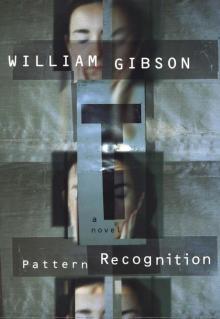 Pattern Recognition
Pattern Recognition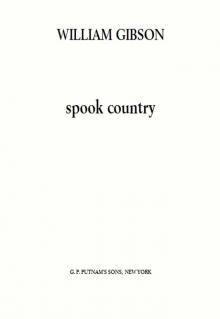 Spook Country
Spook Country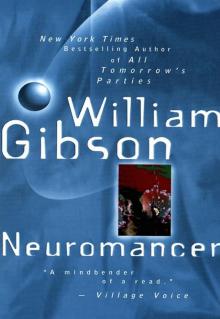 Neuromancer
Neuromancer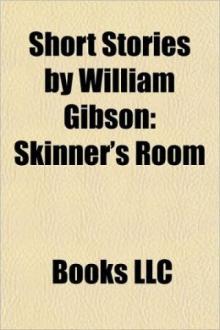 Skinner's Room
Skinner's Room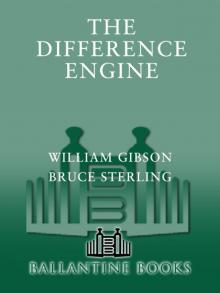 The Difference Engine
The Difference Engine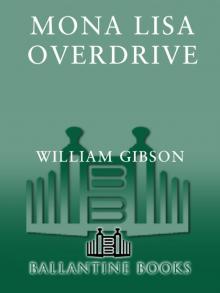 Mona Lisa Overdrive
Mona Lisa Overdrive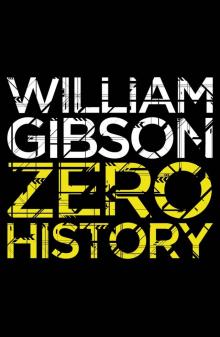 Zero History
Zero History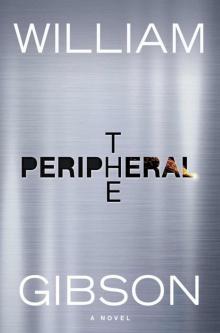 The Peripheral
The Peripheral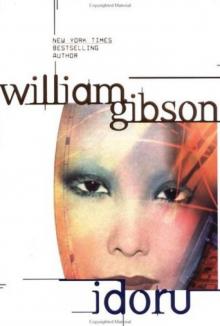 Idoru
Idoru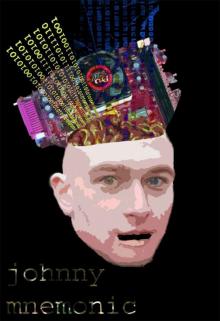 Johnny Mnemonic
Johnny Mnemonic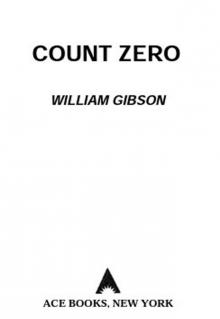 Count Zero
Count Zero Agency
Agency Virtual Light
Virtual Light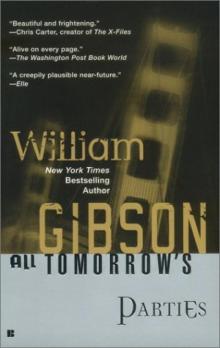 All Tomorrow's Parties
All Tomorrow's Parties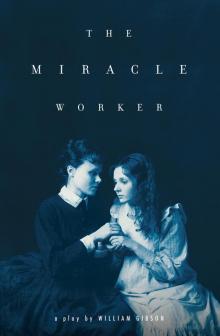 The Miracle Worker
The Miracle Worker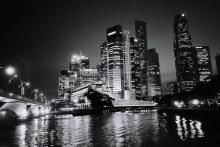 Disneyland with the Death Penalty
Disneyland with the Death Penalty Idoru tb-2
Idoru tb-2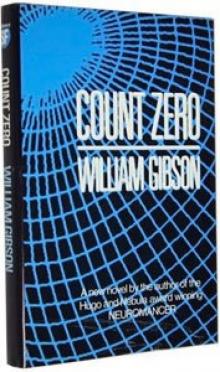 Count Zero s-2
Count Zero s-2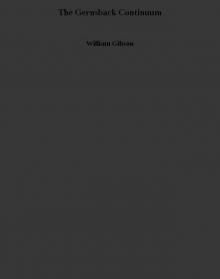 The Gernsback Continuum
The Gernsback Continuum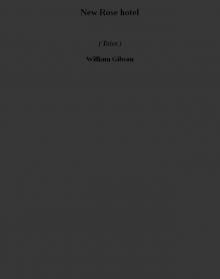 New Rose hotel (tales)
New Rose hotel (tales)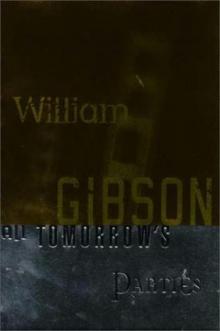 All Tomorrow's Parties bt-3
All Tomorrow's Parties bt-3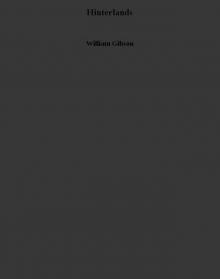 Hinterlands
Hinterlands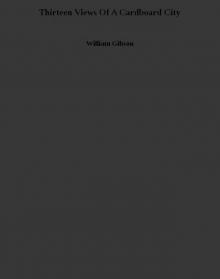 Thirteen Views Of A Cardboard City
Thirteen Views Of A Cardboard City Neuromancer ts-1
Neuromancer ts-1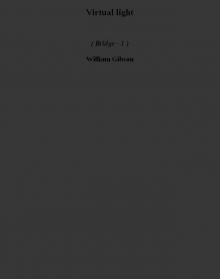 Virtual light b-1
Virtual light b-1